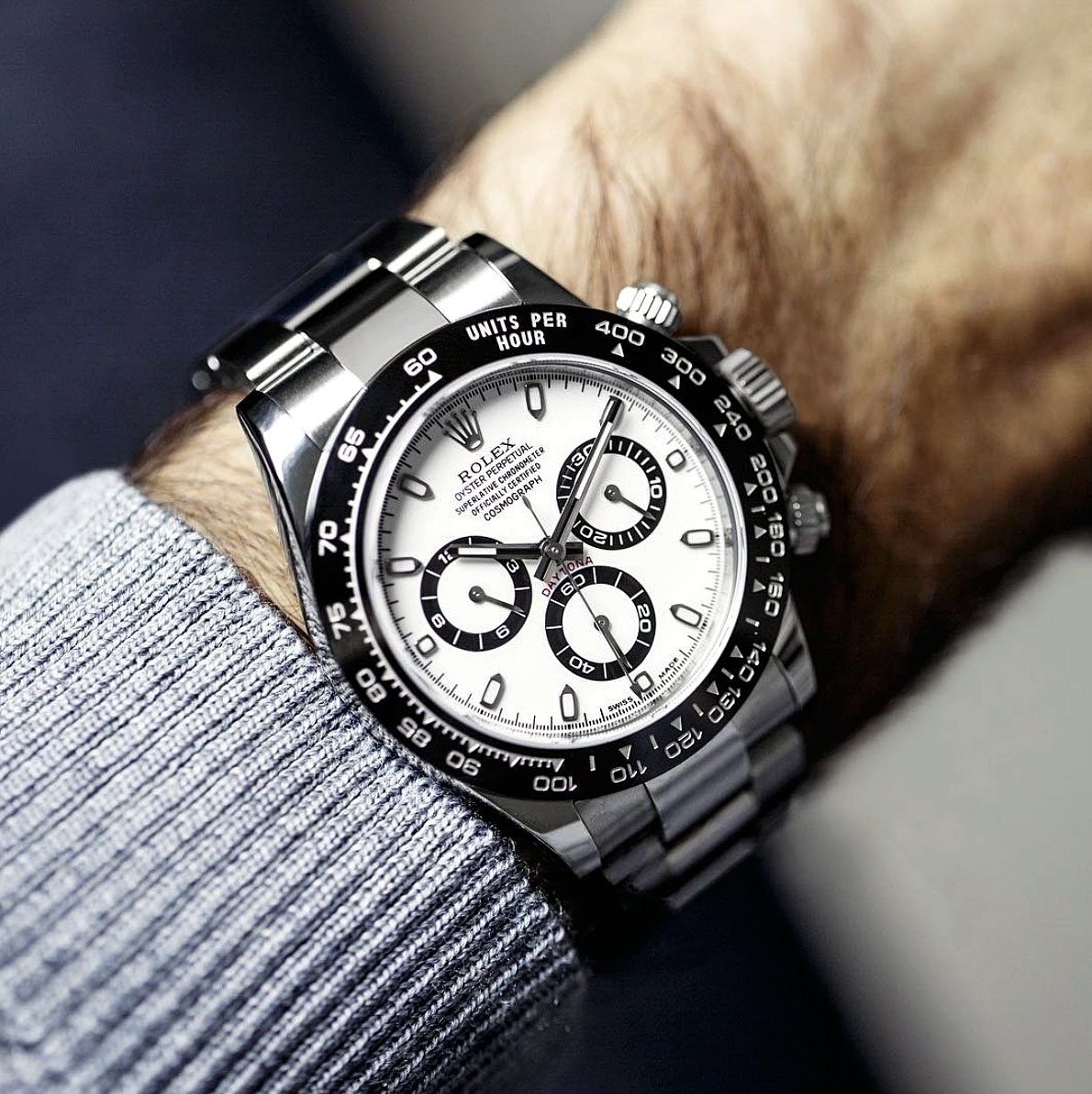This Video Reveals How Fake Rolexes Are Now Almost Identical to the Real Thing
Can you tell the difference?

If there is one luxury timepiece in the world that wins “Most Likely to Be Counterfeited” awards, it’s Rolex. The reasons are obvious: Rolex’s durability as an investment, its cachet as a symbol of wealth, and the fact you can make a quick buck off a sucker when marketing the ripoff.
Thing is, with minimal training it used to be fairly easy to discern whether you were looking at the real deal or not. But technology has upped the game, and it is now pretty hard to tell the real from the fake at a glance. Hence the video above from Watchfinder & Co.
Watchfinder first delved into parsing the sometimes microscopic differences between real Rollies and fakes two years ago, using the Submariner—which is often copied due to its relatively straightforward (therefore somewhat easy to duplicate) design.
But counterfeiting is certainly not limited to one model, and the problem now is technology has become so sophisticated that fakes are really more like clones.
According to Watchfinder, determining the authenticity of a Rolex takes a better than average eye for detail. And of course, you need to know what you’re looking for. In this case, they took a look at the Rolex Cosmograph Daytona 116500LN:
It’s in the delicacy of the finishing that clues begin to sprout up. The mirror finish of the polished dial furniture lacks the lustre of the genuine, slightly dulled by the machine application over the finer hand-polished gloss of the Rolex. Edges are coarser, handled with less care, losing the catch of light they should have when the watch is angled just so.
It’s a similar story with the print, the precision of the plates used to isolate the ink lacking the final detailing needed to get the thin, crisp lettering the genuine watch wears on its dial. The colouring of the ‘Daytona’ script misses the mark by a shade or two, as does the dusting of grey paint in the ceramic bezel. The genuine watch glitters with the fine platinum dust it’s treated with; the fake is lifeless by comparison.
The precision of the fit is lacking in the fake as well, the bracelet end-links showing gaps. The intricate detailing between the knurls of the crown and pushers, they don’t reach the same level of even application found in the Rolex, either. There are tells, if but only if you really know what you’re looking for.
Then there’s the watch caliber—a timepiece’s movement mechanism. According to Watchfinder, this Rolex Daytona has a 4130 caliber, and in the past a fake would have some Chinese-made crappy movement system instead of the finely-machined Rolex setup.
Now, however, a good fake is likely to be “a replica 4130, right down to the last detail. There’s a balance bridge, a column wheel, the trademark purple reversing wheels—even the select use of gold screws has been matched.”

Still, it’s in the finish that the discerning horologist can catch on to a phony. The dupe won’t have “the finesse of the straight and circular graining and doing without most of the polished bevelling.”
The somewhat depressing prospect here is the fact that your chances of paying through the nose for an authentic-looking Daytona have gone up exponentially, and you have to become more of an expert than many might anticipate is necessary to ensure you’re getting the real deal.
That said, if you have acquaintances who aren’t into watches, they will still know the name Rolex, and you can totally impress them with the gift of a new (fake) Daytona if you want to get the phony off your hands.
Just joking, don’t do that. It’s funny, but not very nice.









